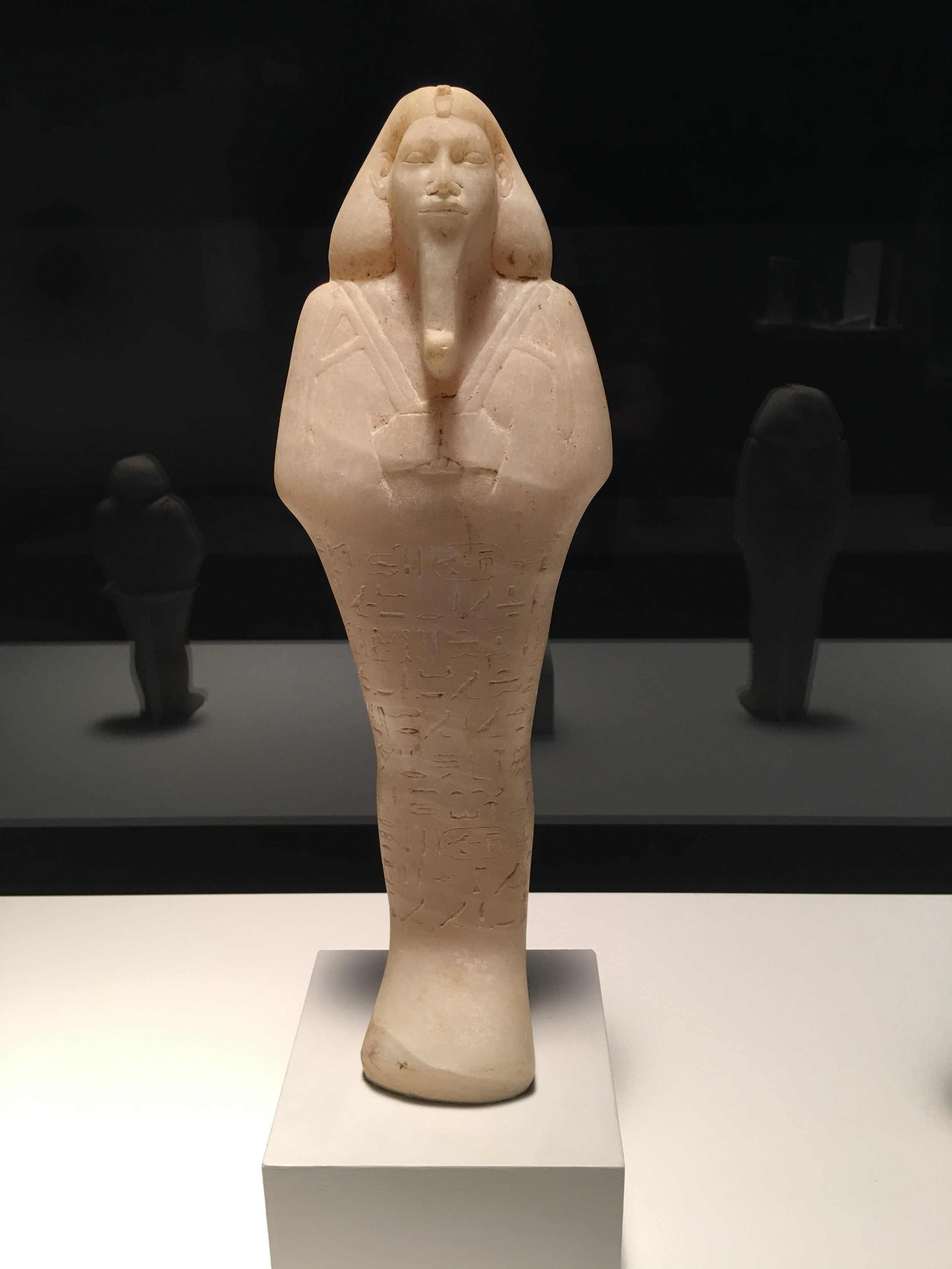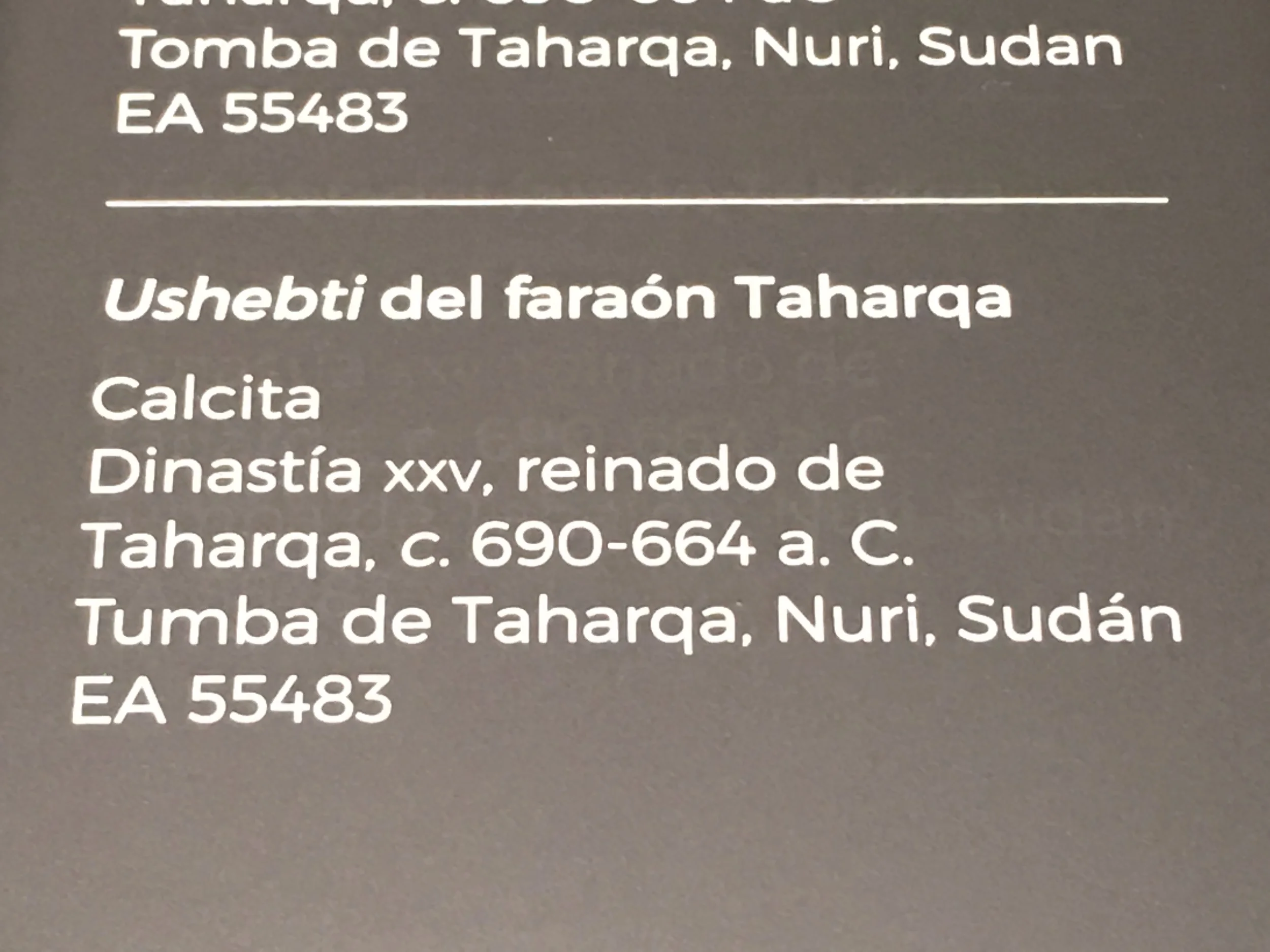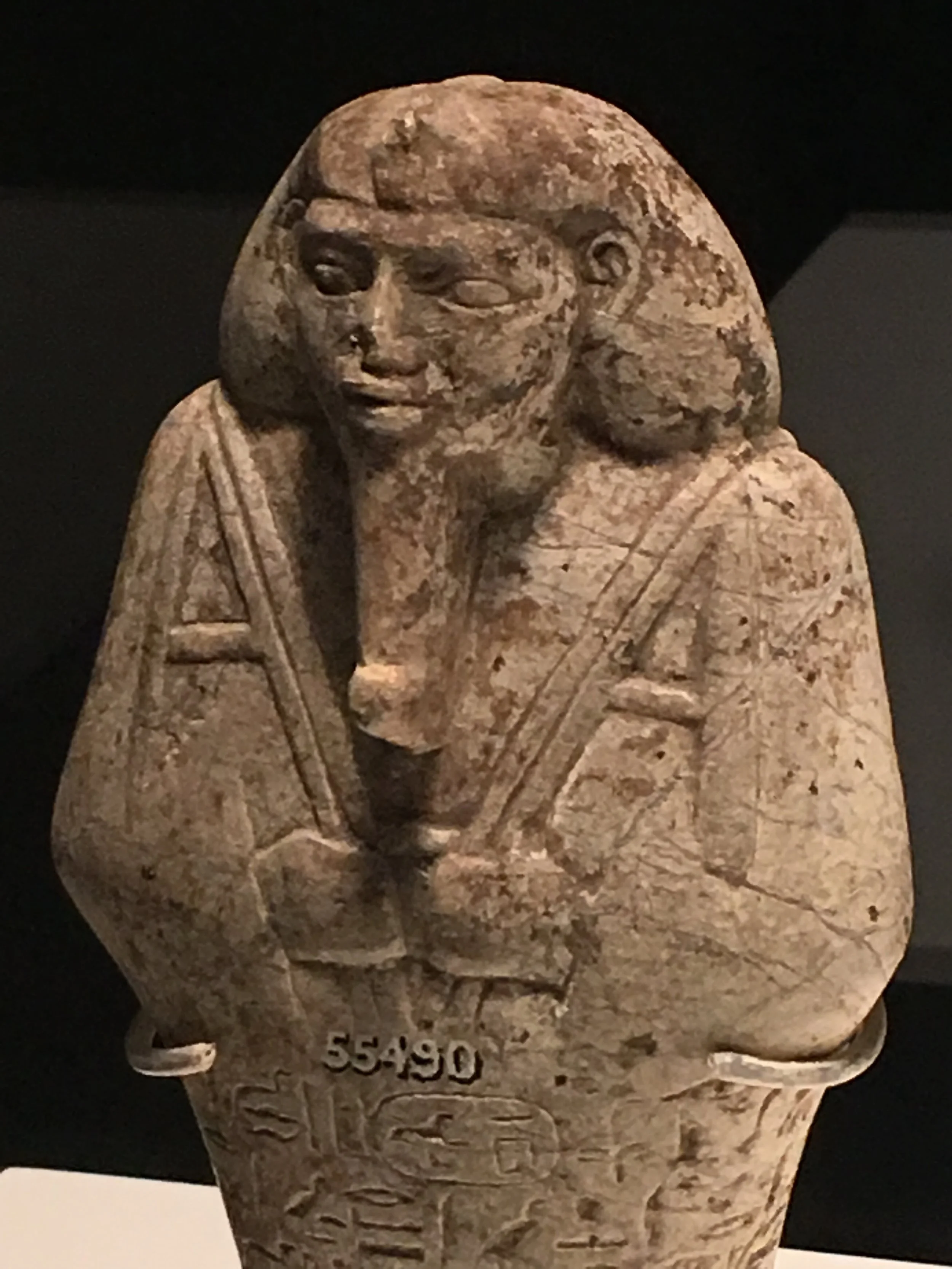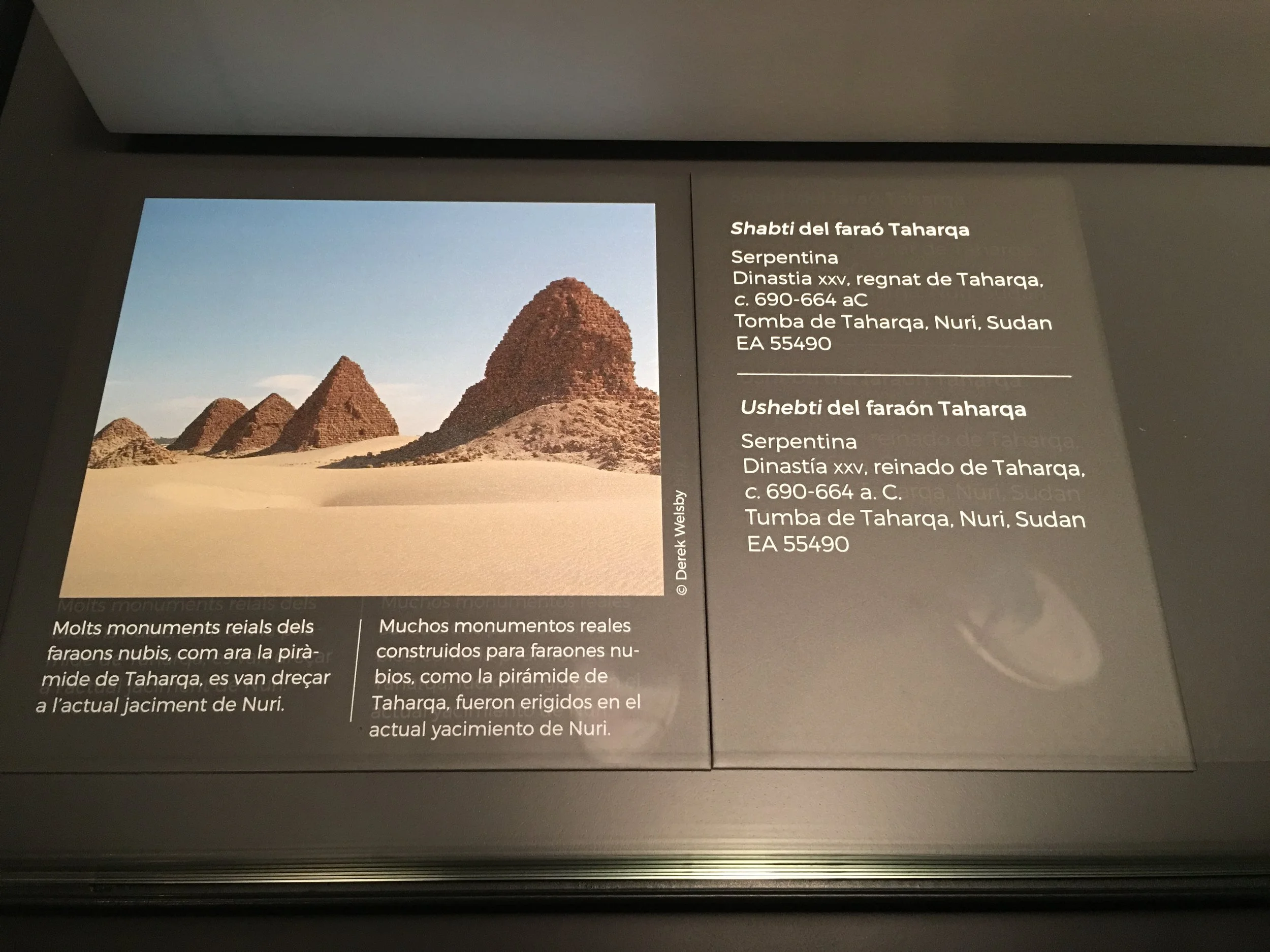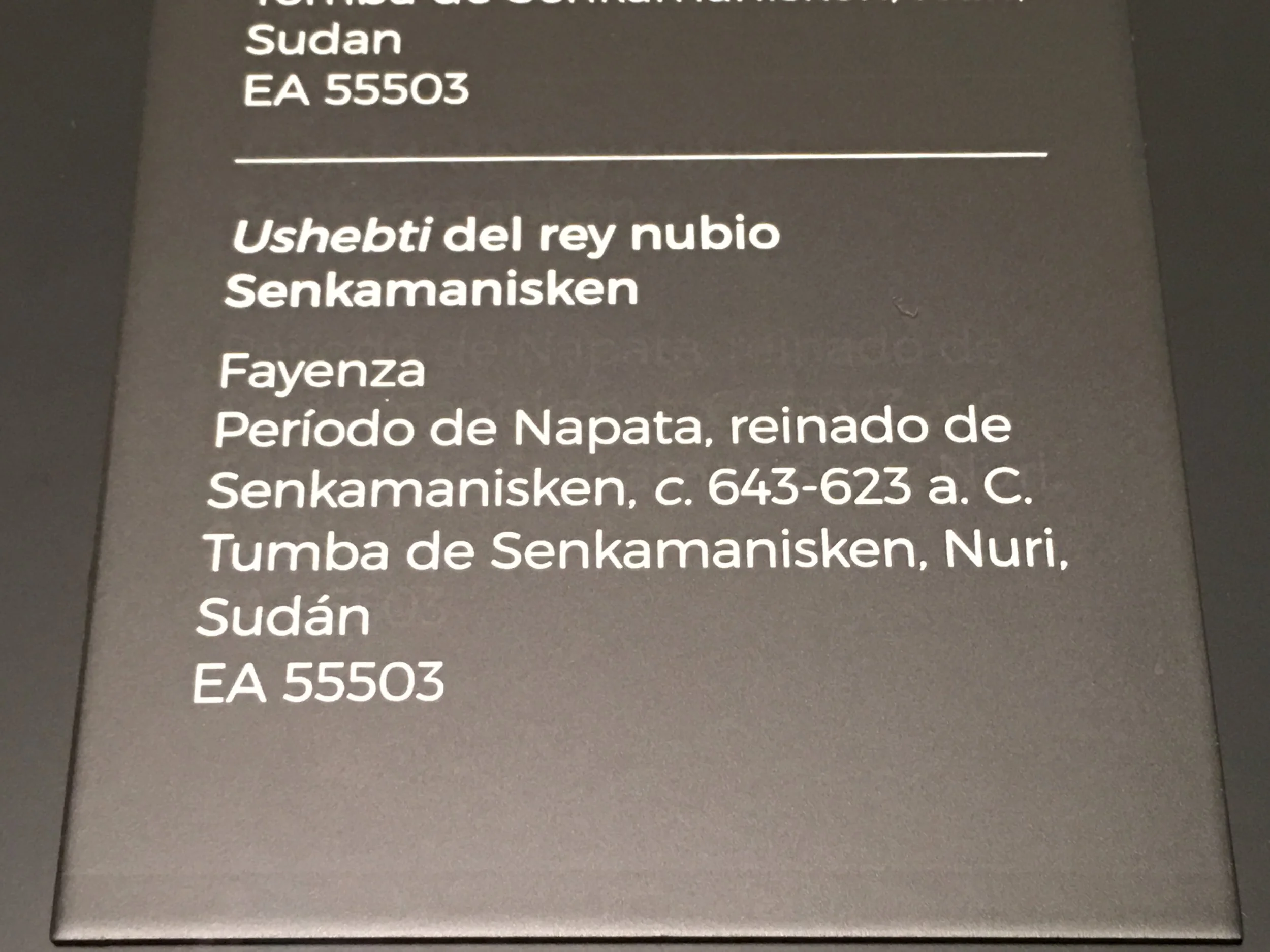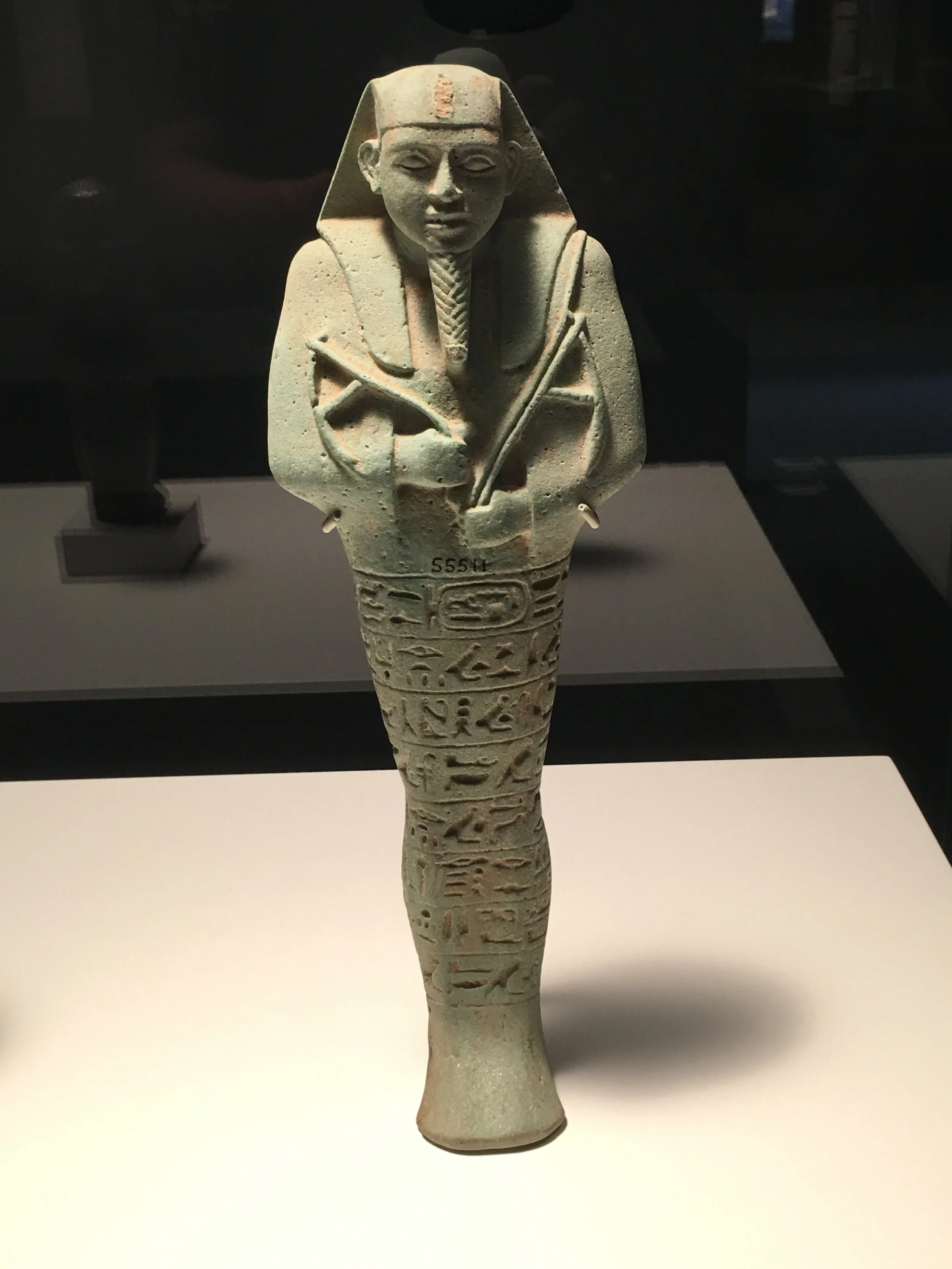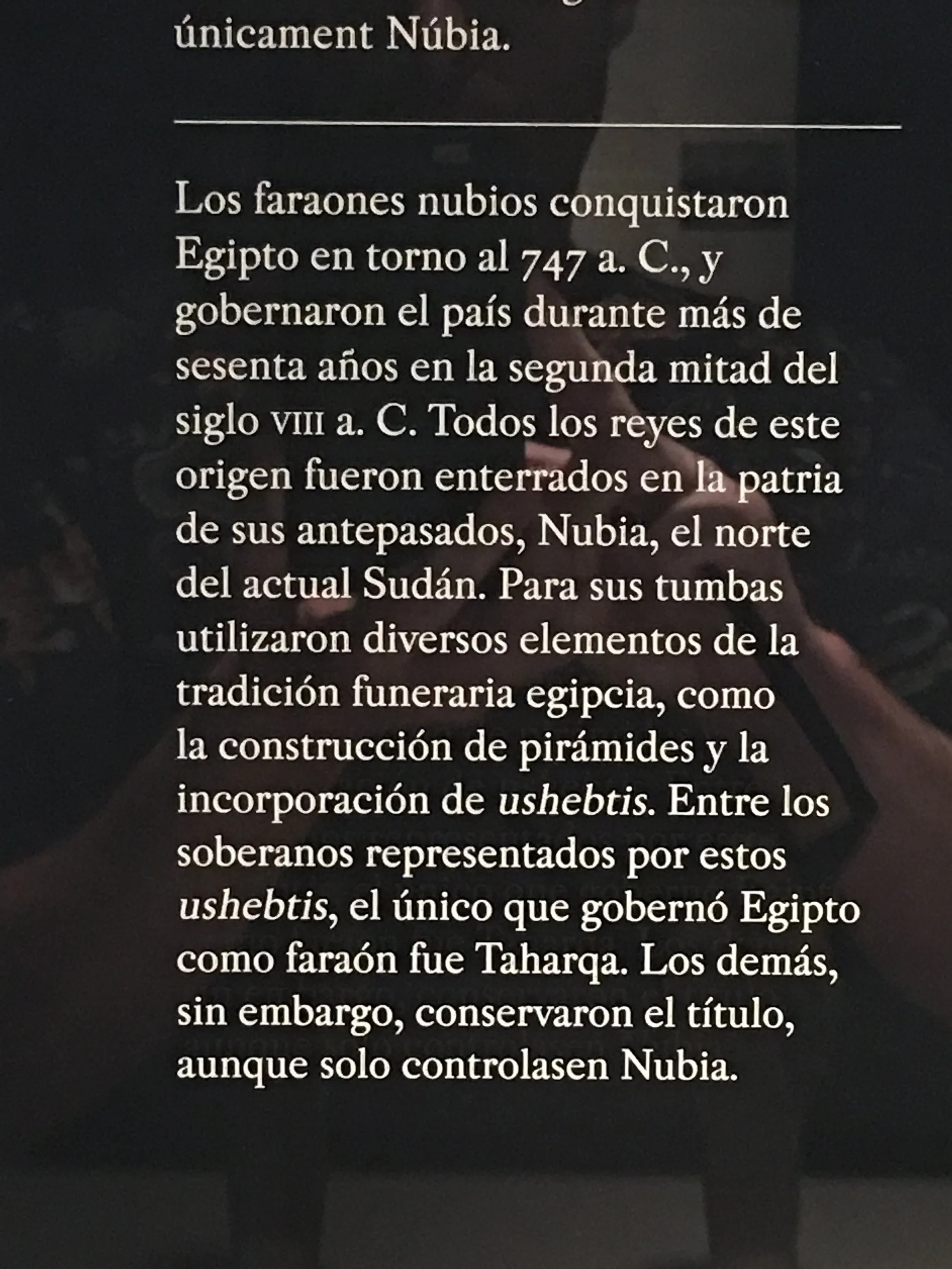Nubian Pharaoh Shabtis
I was surprised at how obviously sub-Saharan African the facial features of these Nubian pharaonic shabtis were when I saw them at the Barcelona Caixa Forum as part of the British Museum’s traveling Pharaohs exhibition.
I’d visited the Nubian Museum in Aswan, Egypt, in 2012, but don’t remember seeing Nubian shabtis there. I am always somewhat cautious when viewing ancient art and artifacts, as there always exists the possibility that they might be fake (see my article on the Amarna Hoax), but I noticed nothing which would indicate anything other than the authenticity of these items.
These shabtis are clearly depictions of sub-Saharan African Nubian people with their specific racial features — which, by contrast, demonstrates that Ancient Egyptians were, in fact, not sub-Saharan Africans.
I’ve also seen numerous depictions, with my own eyes, of Ancient Egyptians - such as Ramses II - smiting foreigners - Hittites, Nubians, etc. — where the Nubian physical characteristics are depicted similarly to these shabtis, but in two-dimensional imagery. Abu Simbel was built as a warning to Nubians to not invade Upper Egypt, so there is no question in my mind that the two nations - Egypt (or Khemet) and Nubia - were two separate and hostile nations.
Lastly, the very fact that the Twenty-fifth Dynasty of Egypt was Nubian - the Kushite Empire - which rulers basically invaded opportunistically after Ancient Egypt had fallen on its own, and before the Ptolemaic Greeks conquered Egypt - proves without a doubt that sub-Saharan Africans and Ancient Egyptians were opposing forces foreign to each other.


